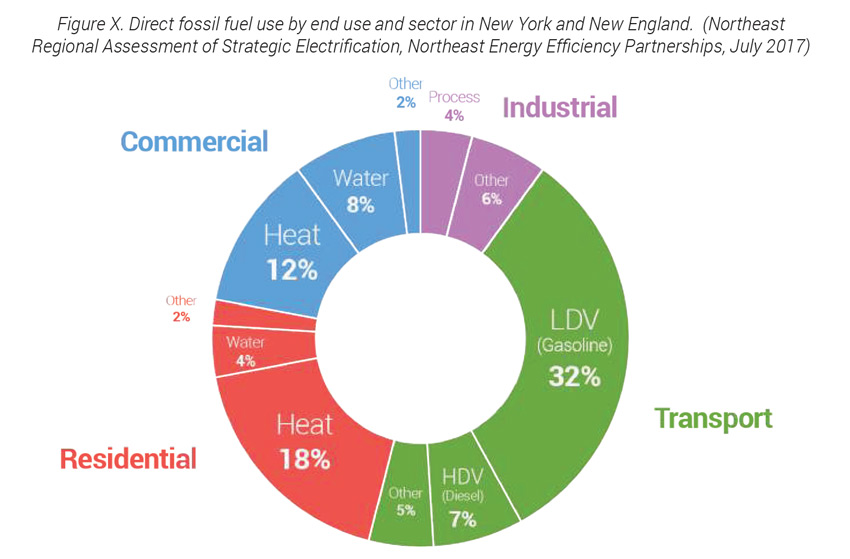By Samantha Caputo | Mon, February 11, 19
President Franklin D. Roosevelt’s New Deal is often credited with bringing an end to the economic catastrophe of the Great Depression by putting various governmental reforms in place to restore prosperity by stabilizing the economy and providing jobs and relief to Americans. For the most part, it seems to have worked. We haven’t had another economic crisis quite like the Great Depression since the 1930s.
Rep. Alexandria Ocasio-Cortez (D-NY) is taking a card out of President Roosevelt’s playbook. Last week, Rep. Ocasio-Cortez and Senator Edward Markey (D-MA) unveiled a nonbinding resolution for a Green New Deal. Inspired by the New Deal, the Green New Deal will convert the fossil fuel economy into a new, green economy that is environmentally sustainable, economically secure, and socially just.
It is an ambitious call to action for the federal government to mobilize a 10-year rapid decarbonization of the economy by modernizing the electric grid and powering the economy with 100 percent renewable energy. In order to mitigate climate catastrophe, the time to act is today. This resolution recognizes the urgency and identifies this opportunity as a way for the “United States to take a leading role in reducing emissions through economic transformation.”
What’s In The GND?
The Green New Deal addresses the cornerstones of social and climate justice through economic reform. A critical component is to ensure this transition is a “fair and just transition for all communities and workers” by creating jobs, investing in infrastructure, and providing access to clean air and water, climate and community resiliency, healthy food, access to nature, and a sustainable environment for future generations. To achieve the Green New Deal goals, the resolution calls for “federal, state, and local government agencies and businesses working together” to mobilize the transition, as well as directing investment to “spur economic development, deepen and diversify industry in local and regional economies, and build wealth and community ownership.
Energy and infrastructure are central pieces, calling for retrofitting "all existing buildings" and building new buildings for "maximal energy efficiency, water efficiency, safety, affordability, comfort, and durability, including through electrification." The recognition that we need to address the building sector, including existing and new buildings, is noteworthy.
Decarbonizing Buildings
Addressing climate change is an economy-wide issue, but in order to achieve our carbon reduction goals and build resilient, comfortable, healthy places to live, work, and play, we need an aggressive approach towards decarbonizing buildings. This includes (i) wide deployment of deep energy retrofits and energy efficiency measures; (ii) electrifying space and watering heating with renewable thermal technologies, such as cold climate air source heat pumps (ASHP); and (iii) establishing strong performance standards for all buildings. This concept comes through clearly in the Green New Deal and aligns with the work NEEP is doing throughout the Northeast and Mid-Atlantic.
In order to certify success, NEEP is working to address key challenges, such as market awareness and consumer interest in the technologies available to decarbonize buildings. Building heating electrification has the potential to create new loads and improve the use of underutilized grid assets when strategically paired with thermal efficiency retrofits and smart controls. In addition, this technology can be integrated into buildings with energy storage, and onsite renewables, enabling buildings to be managed as flexible grid assets.

Buildings account for over 30 percent of carbon emissions in the Northeast and Mid-Atlantic. Addressing this needs an integrated comprehensive approach. In order to make this a fair and just transition, it is critical to work with low-income advocates and housing service groups to provide detailed information on low-carbon solutions. Providing transparency in the marketplace can help consumers make informed choices and accurately account for the utility costs of homes in their renting or buying decision.
In addition, the Green New Deal calls out the non-energy benefits to which all consumers should have equitable access. Building decarbonization will create new jobs, reduce the negative impacts of fossil fuel purchases on the economy, and improve the health, safety, and resilience of homes and buildings. It is important to quantify the benefits of a decarbonized economy, such as job creation, health, resilience, and improved air and water quality. Aligning cost-effectiveness testing with public policy goals - such as those outlined in the Green New Deal - and incorporating all costs and benefits will help decision-makers recognize the full range of economic positives associated with efficient building decarbonization.
Major building infrastructure projects for existing and new construction can be influenced by planning requirements, legislation, and building codes and standards, therefore, it is critical that policy and program goals, and new program approaches, are designed to accelerate change in time to meet this rapid transition and meet our carbon reduction goals. Supporting policy and program will help create more effective, widespread efforts.
Rep. Alexandria Ocasio-Cortez did an excellent job in framing the necessary economy-wide transition to a decarbonized future. While the document is nonbinding, there are forces out there already leading the change necessary to meet these goals. NEEP is one such voice for building decarbonization. The Green New Deal outlines a path forward and is likely to shape climate conversations in 2019 and into the 2020 presidential election. I am looking forward to seeing how these conversations play out.
